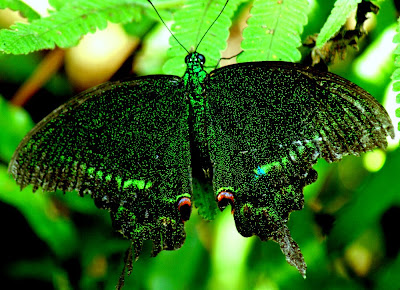When I came back from a short visit to UK yesterday, I was pleasantly surprised to see a dozen butterflies having a smoothie party in my garden!
The hot and humid weather in Hong Kong is ideal for papaya trees. They can grow from a seed to a tree in just a few months. A couple of years ago, I planted some seeds from a papaya fruit in the garden and within a year, I had several huge papaya trees and hundreds of papayas!
I guess when I was away last week, some ripe papayas fell off the trees and became rotten. The decayed papayas attracted some fruit “eating” butterflies to my garden.
While most butterflies feed on nectar from flowers, the Nymphs (Family Nymphalidae) and the Browns (Family Satyridae) prefer decaying fruit juice. The butterflies that visited my garden belong to these two families.
Because of their feeding habits, most of the fruit “eating” butterflies are not as colourful as their nectar “eating” counterparts. They are not fast flyers and tend to fly low in the undergrowth in semi-shaded environments.
This is an Evening Brown on the left (and below), a large sized Brown commonly seen in Hong Kong with a wingspan of 6-7cm. Most Brown family butterflies have brown coloured wings with “eyespots” on both sides to mimic the eyes of large animals for self-protection. As you can guess from its name, Evening Brown is mostly active at dusk.
This is a Bamboo Tree Brown on the right, smaller than the Evening Brown with a wingspan of 5cm. The Bamboo Tree Browns are also commonly seen in Hong Kong.
Below is a Dark-Band Bush Brown, similar size to the Bamboo Tree Brown with different patterns on their wings.

































































